At Five in the Afternoon: Colonial Wars and (in) the Slippage of History
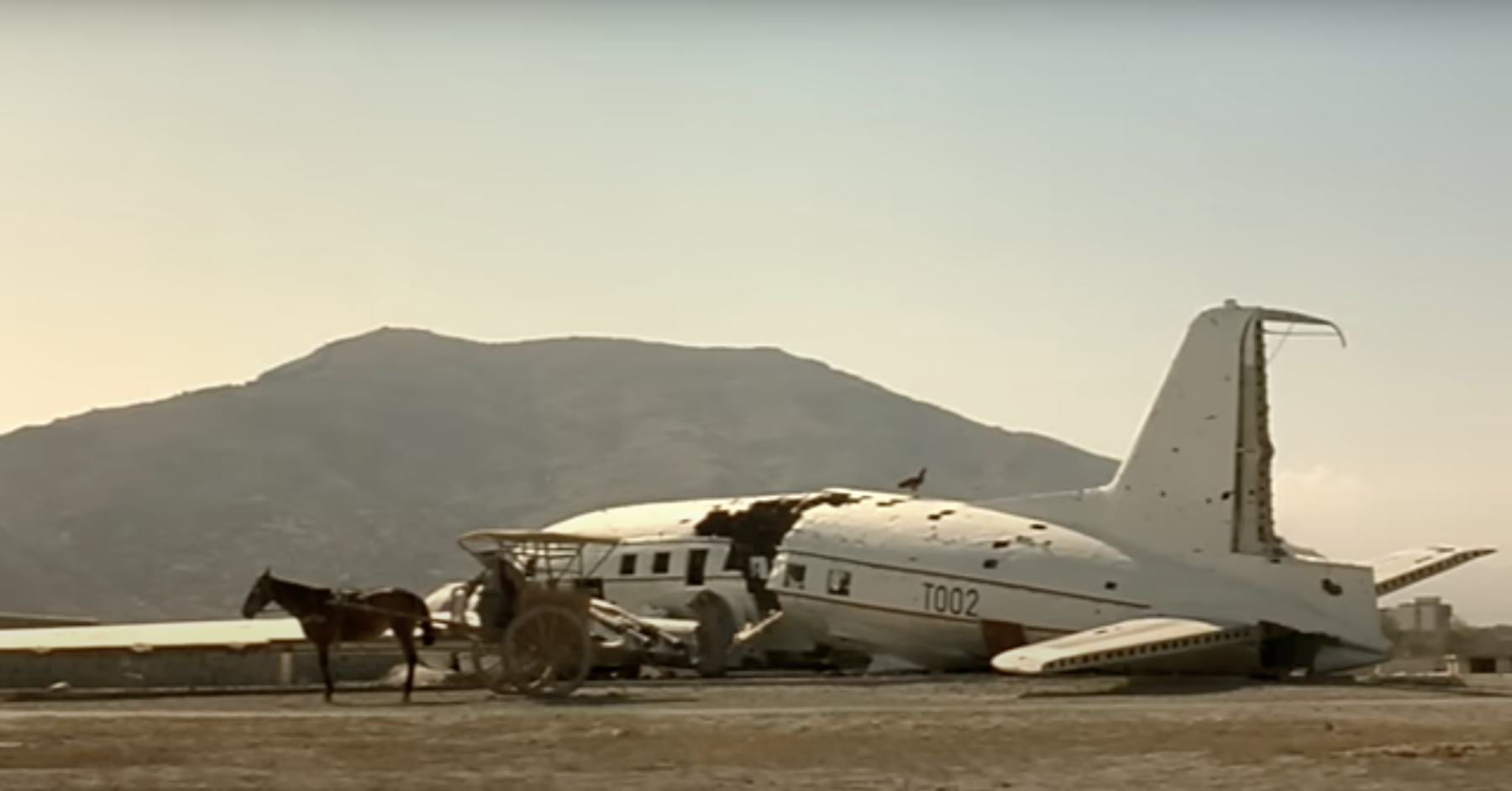
Taking shelter in an abandoned airplane. (Still from At Five in the Afternoon. Samira Makhmalbaf, 2003.)
Iranian filmmaker Samira Makhmalbaf’s film At Five in the Afternoon (2003) tells the story of a young woman’s ambition for an education in Afghanistan, set against the backdrop of the American invasion to oust the Taliban in 2001. In war-torn Kabul, Noqhreh, her religious father, and her brother Akhtar’s wife Leilomah struggle to scrape a living in the ruins of the city. The film unfolds as they tend to Leilomah’s sick child and wait for Akhtar, a truck driver, to return from work in the countryside. As space becomes constricted with the daily influx of refugees from Pakistan, the family is repeatedly forced out of their shelter, pushing them to seek refuge from one place to another, including an abandoned airplane. Amidst these uncertainties, Noqreh sneaks away from the madrassa where her religious father had agreed to her receiving an education. She attends, instead, a secular girls’ school where she conceives the dream of becoming President. On learning of Akhtar’s death from one of the refugees, Noqreh’s father moves the family towards the desert with the help of his prized possessions—his horse and cart. In the desert, Leilomah’s sick daughter dies of starvation. While digging a grave for the dead child, Noqreh's father encounters an old man who is on his way to the city of Kandahar to speak on behalf of Osama bin Laden to prevent him, a Muslim, from being turned over to the infidel Americans. Noqreh’s father responds that the stranger is too late; he then buries his grandchild and continues into the desert. Premiering in 2003, this film is one of the first in Afghanistan since America’s war against Taliban in the name of world democracy and human rights to display the horrific terrors the war wrought upon the Afghan population. In this manner, it foregrounds the paradoxical nature of the liberal democratic project. This two-part essay will meditate on the film, twenty years after its release, through a comparative examination of American neocolonialism as premised on the figure of the refugee.
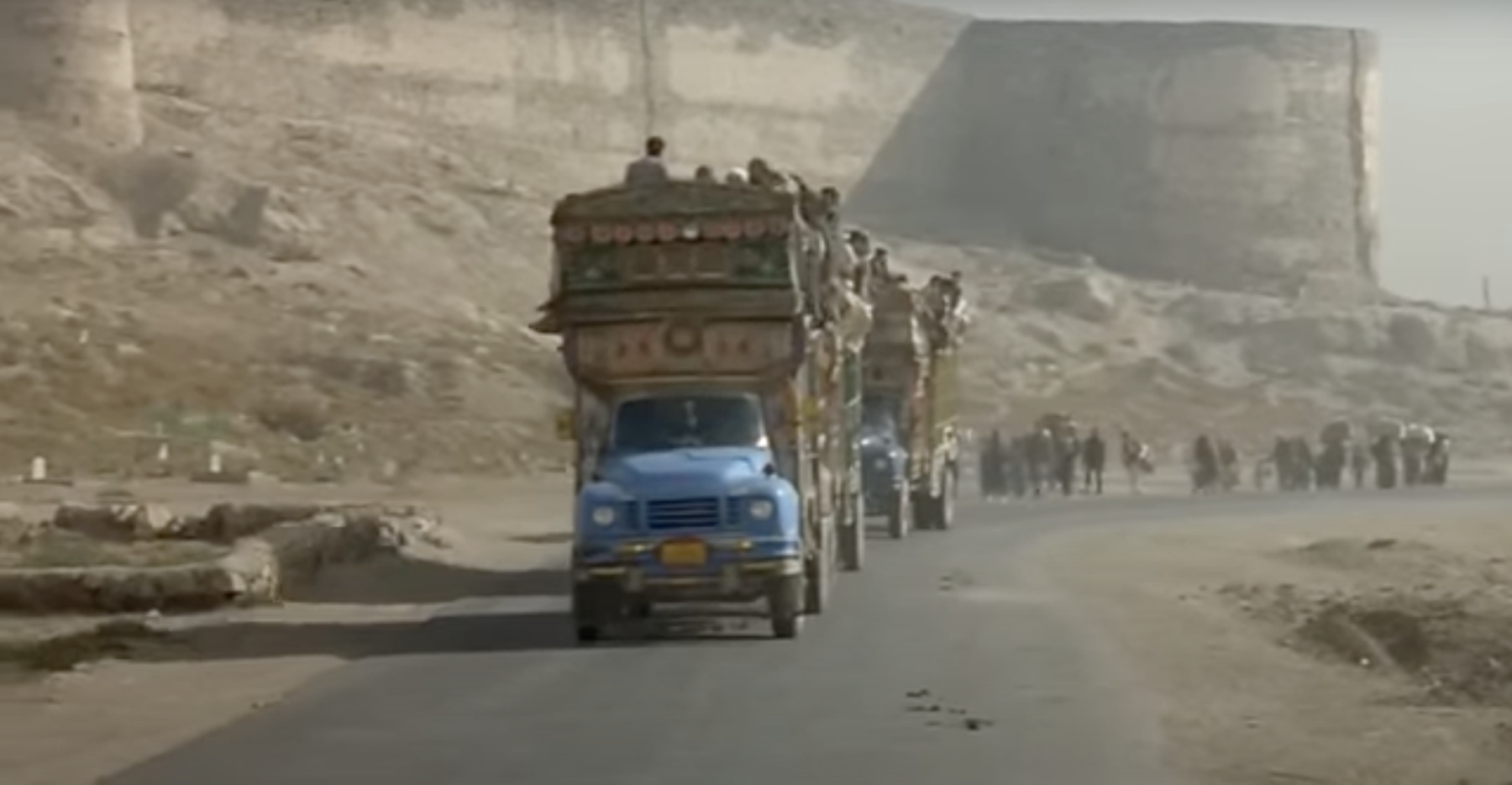
Arrival of refugees. (Still from At Five in the Afternoon. Samira Makhmalbaf, 2003.)
The film’s protagonist and her family are reduced to the figure of the refugee, even as the war draws its legitimacy from the promise of the arrival of the Rights of Man and Citizen. America’s presence in Afghanistan was sought to be justified through colonial discourse that views it as barbaric. The landscape, that will be made into a warscape, is a space of the not-yet—the not-yet of humanity, of citizenship and of rights. To see the film twenty years since its release—in the aftermath of the abrupt withdrawal of American troops from Afghanistan in 2021 and America’s culpability in the ongoing genocide in Palestine that has escalated since October 2023—is to shed light on the illusory nature of liberalism and the perennial deferral of justice in our present moment. Taking a cue from Ariella Aïsha Azoulay’s instructive article, "Seeing Genocide", on the ways in which Israel’s weaponisation of images obfuscates the genocidal campaign against Palestine, I want to think about America’s role in the Palestinian genocide and its war in Afghanistan together to ask: In what ways does America require the figure of the refugee for the sustenance of its own colonial project? Thinking with Giorgio Agamben’s figure of the homo sacer, Makhmalbaf’s film is a fertile ground to explore the place of race in neocolonial imaginaries of war and the contradictions entailed within the supposed universalism of human rights, bringing to light the fragile nature of this post-war concept today.
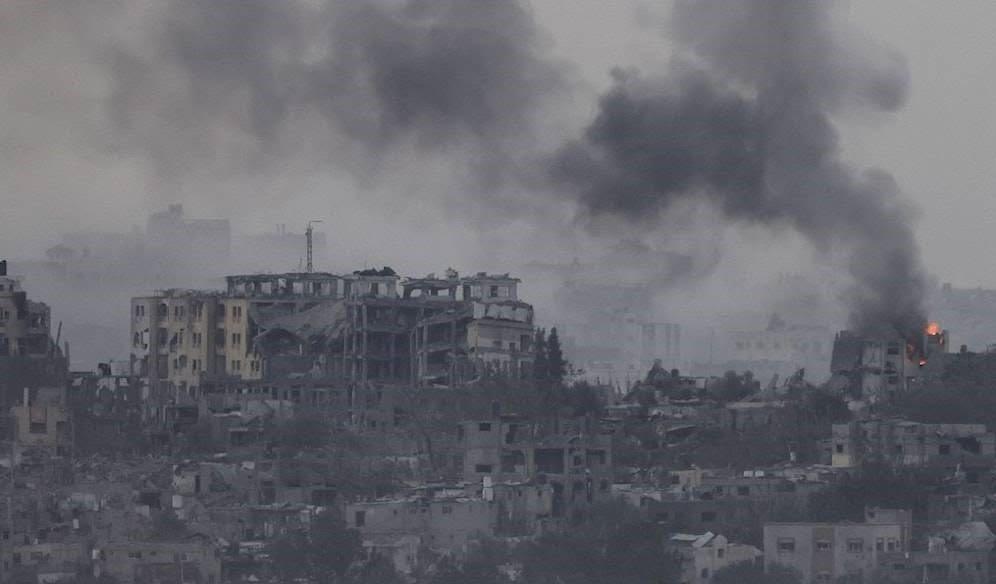
Since 1948, Israel has been the largest recipient of U.S. foreign aid and has received over $300 billion in economic but primarily military assistance, with an annual receipt of $3.3 billion of American taxpayers funds. Since 7 October 2023, the Biden administration has made over one hundred military aid transfers to Israel although only two packages amounting to $250 million have passed congressional review and been made public. (Image courtesy of Wikimedia Commons.)
In his seminal work titled Homo Sacer: Sovereign Power and Bare Life (1998), Agamben reflects upon the nature of sovereign control over collective life in modernity by demonstrating how sovereign power is premised on the state of exception. The sovereign decides the limits of the law by acting outside of the law, creating an exception wherein the law abandons—or does not apply to—at least one individual within the state so that such an individual is no longer a subject. Thus, the very universal applicability of modern sovereign law requires this exception, the homo sacer. Drawing on the archaic figure from Roman law—sacer or sacratio—Agamben poses the perplexity of human life that is considered sacred but also allowed to be killed. Although it is otherwise forbidden to violate anything sacred and although there is a ban on sacrifice, it is permitted to kill the sacred man and yet not be guilty of sacrilege or homicide. In other words, the homo sacer cannot be sacrificed or executed, but he can be killed without being punished. This double exclusion, Agamben argues, renders the figure of the homo sacer as a limit concept to the sovereign subject that cannot be explained either in the realm of divinity or humanity. Rather, the homo sacer must be treated as an autonomous figure that lies in a zone of indistinction between the religious and juridical, sacred and profane, each spilling into the other. Thus, the homo sacer is consecrated to death and belongs to the gods, even though he cannot be sacrificed. But like the devotee that survives, his existence is embarrassing. This is because while it is precisely his consecration that will permit the community to be saved from the wrath of the gods and hence cannot be given back to the profane world, his body seems to belong to the world of the living. It enters into an intimate relationship with death without belonging to the world of the dead. It is bare life.
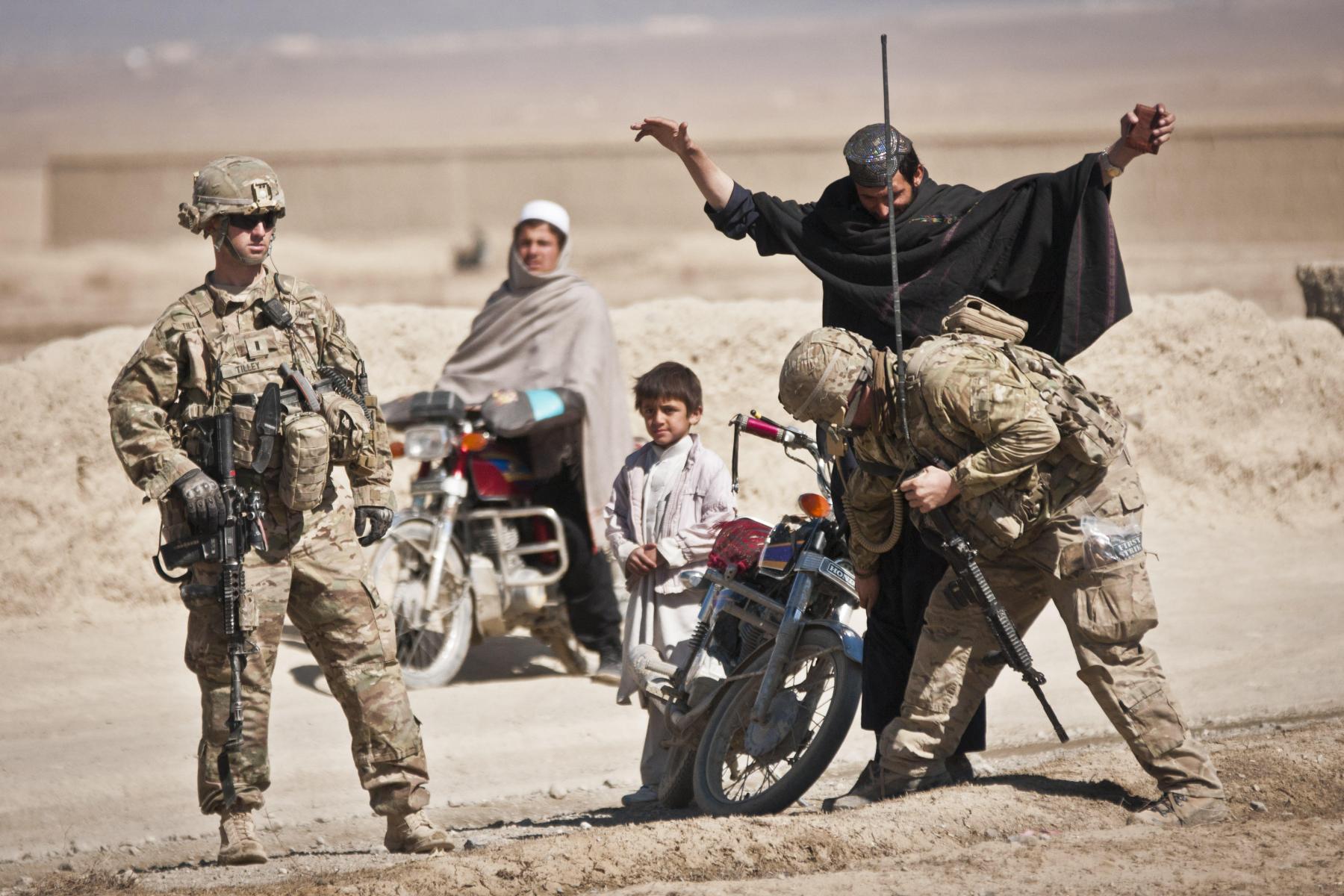
U.S. Army soldiers search Afghan travellers at a traffic checkpoint outside Yosef Khel. (Afghanistan, 2012. Image courtesy of Wikimedia Commons.)
The foundation of sovereign power is the preservation of its natural right to do anything to anyone, which now appears as the right to punish. However, this right is brought into existence at the very moment of the foundation of the City and the establishment of a social contract. Thus, anyone who is able to be killed but not sacrificed then constitutes a bandit, whom anyone may harm, who is considered already dead. The case of the wolf-man, or were-wolf, who lives on the threshold of indistinction between man and wolf, exclusion and inclusion, and who, being neither man nor beast, is seen as dwelling within both while belonging to neither. Yet, it is he who constitutes the political, and therefore dwells permanently in the city. It is thus that the figure of the werewolf, the homo sacer, presents itself as the limit of the Declaration of the Rights of Man and Citizens in 1789. This doctrine conflated the rights of man with those of the citizen, in which the fact of birth automatically includes man in the category of the citizen. However, if the werewolf is the state of exception as the figure that constitutes the possibility of citizenship through its very exclusion; human rights—as it developed in global discourse post World War II after the horrifying barbarity of the Jewish holocaust—finds itself in a paradoxical position. For, its separation of the rights of man from the rights of the citizen can only grasp human life in the form of bare life, thus reifying the very state of exception that makes possible sovereign power.
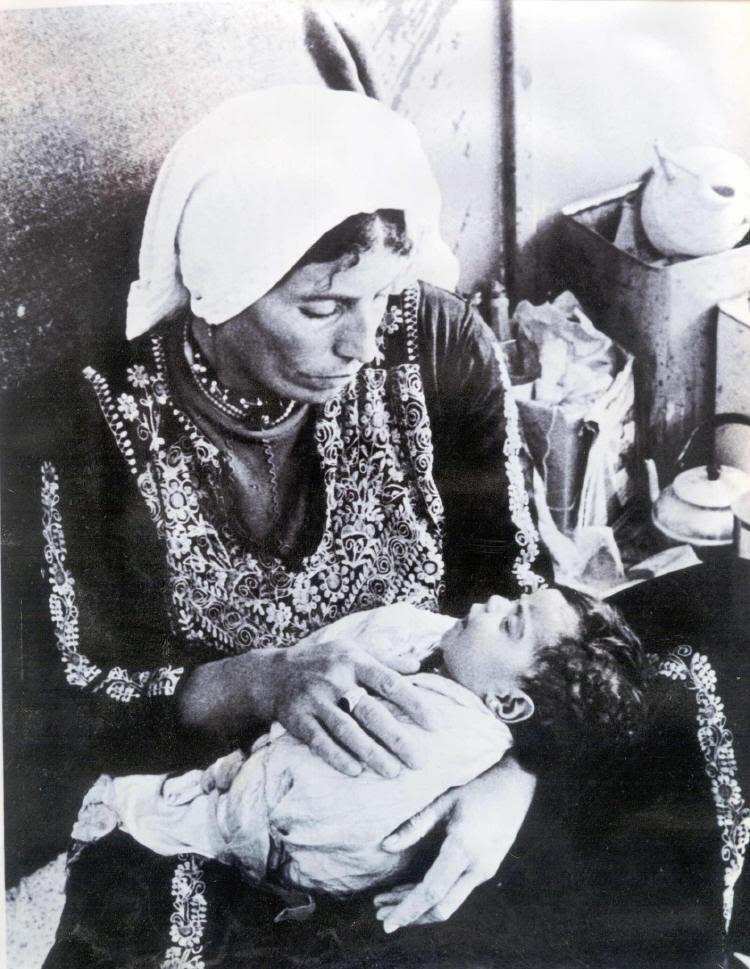
Palestinian woman with baby in 1948 Nakba, during which at least 750,000 Palestinians from a 1.9 million population were expelled from their homes and turned into refugees. (Image courtesy of Wikimedia Commons.)
The ongoing genocide of Palestinians and its denial by Israel, a state created through the dispossession of Palestinians from their homes in 1948 during the Nakba—literally, catastrophe—illuminates this paradox. For if the Human Rights Discourse is premised—as Robert Meister incisively claims in After Evil: A Politics of Human Rights (2011)—on the exceptionalism of the Jewish Holocaust, with Israel being the symbolic memory of the violence of the past, which is to never be repeated again, the question of Palestine forms the constitutive exception to this discourse. Crucially, America’s overt and covert support for the shoring up of this discourse is linked insidiously to its colonial wars in Afghanistan and the Middle East. As Angela Davis has elucidated in Freedom is a Constant Struggle: Ferguson, Palestine, and the Foundations of a Movement (2016), race functions as the organising principle in the military-industrial complex between Israel and America. This enables the weaponisation of arms against Arabs in Palestine and Black communities within America. It includes—but is not limited to—the global tenacious reach of private security companies such as G4S, which were propelled to legitimise the invasion of Afghanistan, only the first of a two-decade-long series of American crusades in the Global War on Terror. A subsequent democratising programme to apparently liberate the Afghan population from the Taliban was premised on safeguarding “human rights,” a concept, whose very foundation relies on Palestinians as the constitutive exception. What is the valence then of the homo sacer in understanding the contradiction of human rights? The second part of this essay will examine how Makhmalbaf's film turns bare life into a condition for justice. In what ways does the film anticipate the denial of human rights to Palestinians in Gaza—now known as the “graveyard for children” under rubble, without food and water, under constant threat of death, not fully alive, and not yet declared dead?
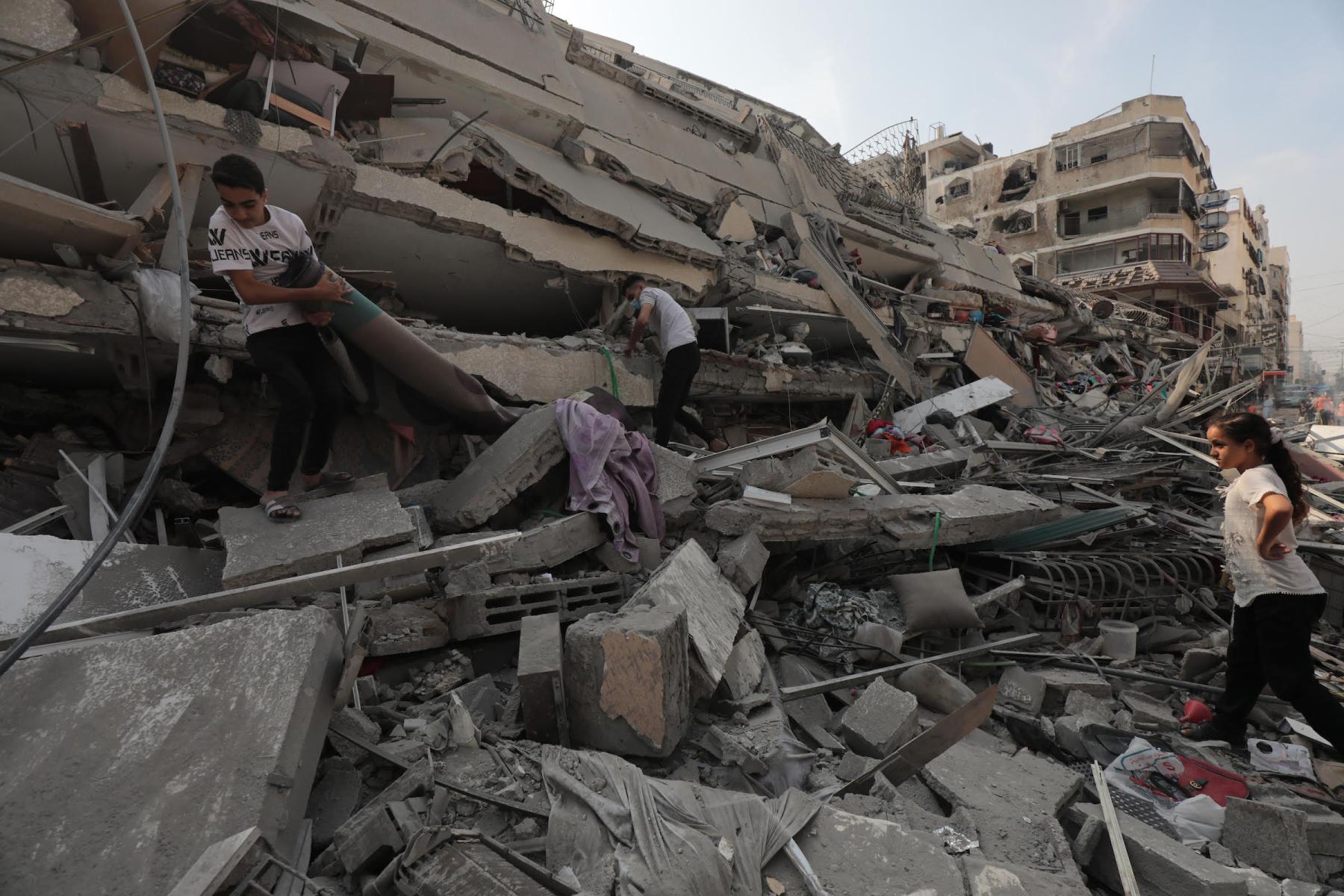
Since 7 October 2023, after over 200 days of Israel’s war on Gaza, more than 34,000 Palestinians have been killed, of which 14,000 are children. The number of wounded is estimated to be 74,000 with over 75,000 tonnes of explosives dropped on Gaza by Israeli forces. Nearly 85% of Gaza’s 2.3 million population is displaced and about 1.1 million people are living through catastrophic lack of food. (Image courtesy of Wikimedia Commons.)
To learn more about films about Palestine, read Najrin Islam’s three-part series on the politics of images in Palestine through the themes of exile, speculative fiction and catastrophe. Also read Ankan Kazi’s reflections on Shaina Anand’s film Al Jaar Qabla al Daar (The Neighbour Before the House, 2009–11).
To learn more about Iranian filmmakers making films about Afghanistan, revisit Ankan Kazi’s essays on Mohsen Makhmalbaf’s Kandahar (2001) and Afghan Alphabet (2001).




